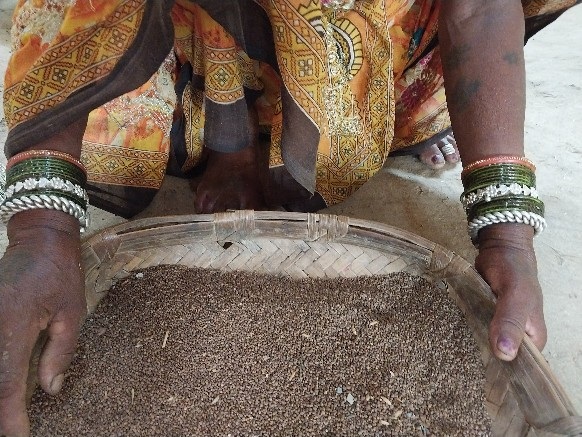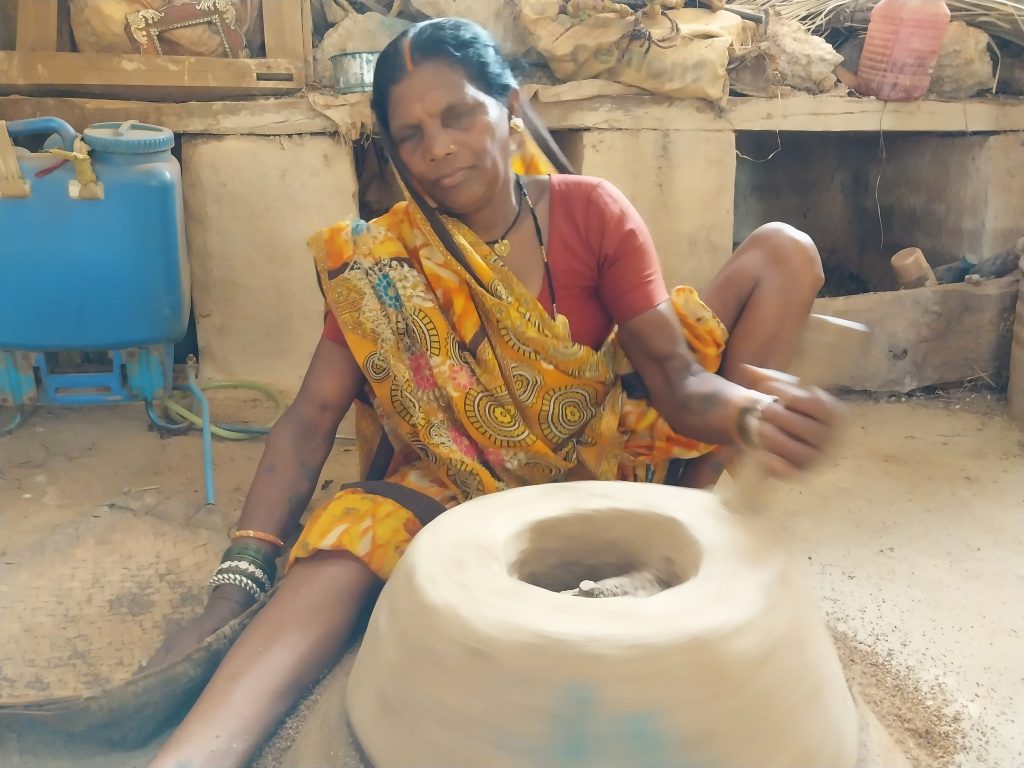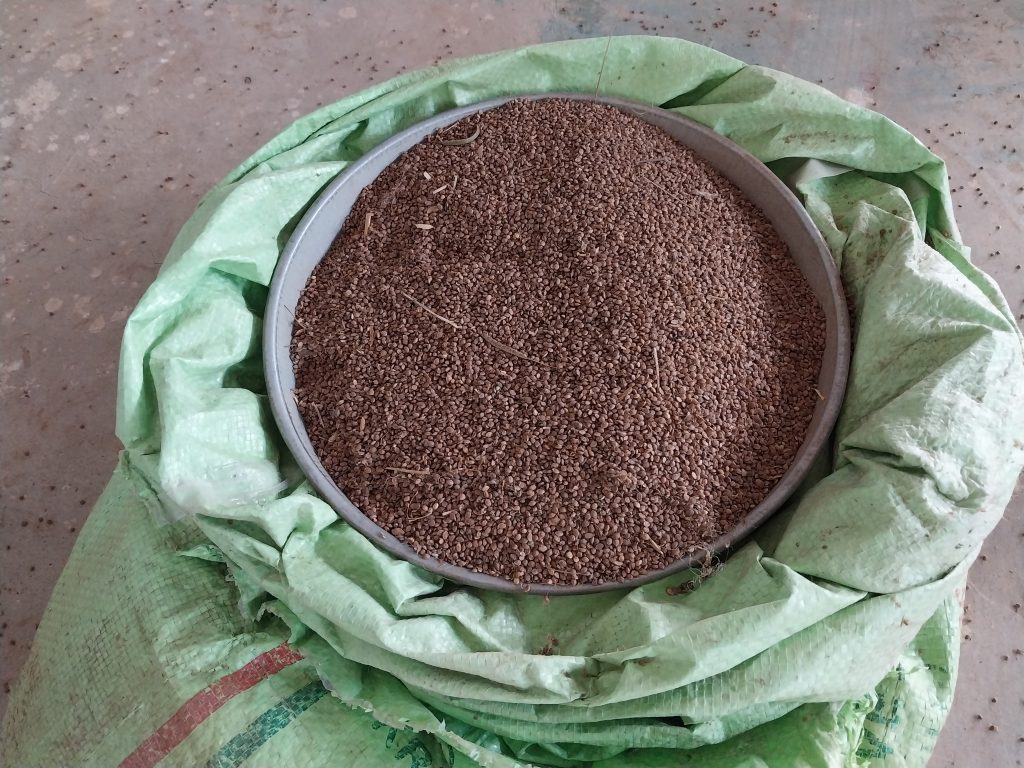Rice distributed through the public distribution system is responsible to a great extent behind the non-consumption of millets or in its sharp reduction when it comes to rural areas. Also, millet processing is a tedious job. A report by Deepanwita Gita Niyogi

Across the country, respective state governments are promoting millets on a large-scale through various millet missions. To popularise the cultivation and consumption of millets, Chhattisgarh announced a higher minimum support price (MSP) for kodo and kutki, both small millets.
At present, the MSP for kodo stands at Rs 3200 per quintal and that of kutki is Rs 3500 per quintal. On the lines of Odisha, Telangana and Andhra Pradesh, the state also launched a millet mission in 2021.
Amit Singh, under secretary, department of agriculture, Chhattisgarh, said the MSP for kodo and kutki will continue. “The millet area in the state initially covered 80,000 hectares. Under the mission, the target was 1,80,000 hectares in five years. In the past two years since its launch, the area has increased to about 1,20,000 hectares in the state from the initial 80,000 hectares. The actual figure is awaited.”
The millet mission in Chhattisgarh is running under the convergence model and has been linked to
other government schemes. The mission is on in all districts even though in the beginning, 21 districts were targeted.
A shift away from millets
Though millet missions have a targeted approach, overall, the consumption of millets, has gone down in the rural areas of the country. Tribals, who still cultivate millets in large quantities, are gradually moving away from millets which used to be their staple diet once.
For instance, in Odisha’s Niyamgiri hills, the dominance of commercial crops such as pineapples have taken a toll on traditional crops, including millets. Still, the Odisha Millets Mission covers 177 blocks in 30 districts of the state.

Naresh Biswas, who works with Baiga tribals in Madhya Pradesh, said there is a correlation between millets and forest foods. Millets in tribal areas are mostly eaten as rice or bhat or as pej or porridge. Pej is consumed in the morning before setting out to work but for main meals twice a day, bhat is preferred.
However, for the consumption of millet bhat, the quantity of dal and vegetables has to be more compared to that of rice because of the taste and texture of millets. “Millet bhat dries up quickly. It soaks up dal faster and so one needs more dal to go with it. In the absence of dal, one needs more vegetables,” said Biswas.
Earlier, tribals collected different types of vegetables from the forest. But as forests have become protected ones in many areas, there are restrictions on the collection of forest foods. “Thus, tribals often do not get the required quantity of vegetables. They also cannot buy dal much from the market due to economic constraints,” Biswas explained.
Forests are a big food basket for tribals. Many tribals eat dried leaves in summers when there is a shortage of vegetables. Mono-cropping has ruined the concept of forest foods. People’s food habit has become focussed on rice and wheat.
Preference for rice
The public distribution system of rice is responsible to a great extent for the non-consumption of millets or in its sharp reduction when it comes to rural areas.
Millet processing is a tedious job. For tribal women, time is short as many go for labour work these days. Rice can be cooked faster. Processing machines are not available for domestic uses and those that are in use are for commercial purposes. Mostly, traditional items like jata and musar are used at homes in millet processing and both are labour intensive.
Biswas feels the school system is also to be blamed. “Tribal children get rice-based mid-day meals. When at home, they refuse to eat millets. Women say it is not possible to cook both rice and millets at home.” Odisha has introduced millets in anganwadi menu and mid-day meals.
Consumption of millets is mainly popular now in urban areas. “Once tribal women consumed millets in large quantities. In those days, they got up at dawn for millet processing. Now, they have an option. Broken rice is available at ration shops. Some also exchange millets for rice,” Biswas added. He cited the instance of Baiga tribal woman Laheri Bai who consumes more rice than millets. When she has time, she eats millets but it is rare.

Dwiji Guru of The Millet Foundation admitted that tribals are moving away from millets and that it is only in small pockets that millets are getting mentioned. “Both consumption and cultivation are reducing in most Adivasi communities. Bleached (polished) rice through the public distribution system is one of the many reasons. Processing of millets is vital. Community-oriented, decentralized millet processing with an ecosystem approach is the way to go. We cannot look at processing in isolation.”
Millets are still a niche segment and by no means comparable to current staples like rice and wheat. People’s health concerns and the much publicized health benefits of millets is a primary driver of the current rush for millets.
A Chhattisgarh officer, who works for the women and child development department, said on the condition of anonymity that tribals in Chhattisgarh still consume millets, especially kodo and kutki as well as ragi. This is true of the Bastar region mostly.
“Non-consumption of millets alone cannot be blamed for malnutrition. There are several reasons for it like not leading a hygienic lifestyle and the absence of safe drinking water. Many women don’t take supplements during pregnancy. But many farmers are selling millets and even maize for ready money as the minimum support price is good and not keeping much for consumption.”
R.L. Khare, the registrar of Mahatma Gandhi University of Horticulture and Forestry in Raipur, said ragi is being promoted in the state and millet cafes have opened in certain places. “But millet productivity is low as tribals do not possess the technical knowhow. There is a need for improved varieties to increase the yield.”












